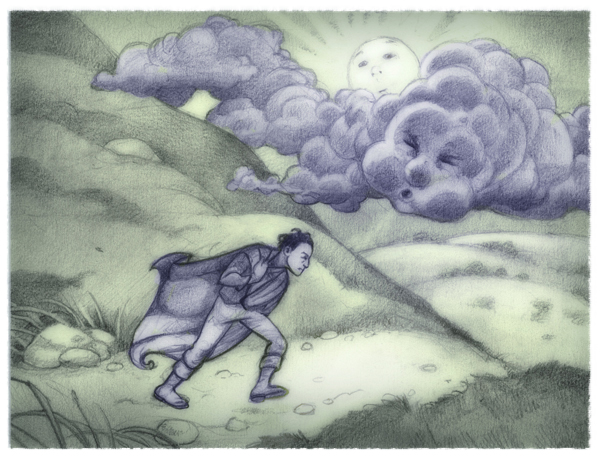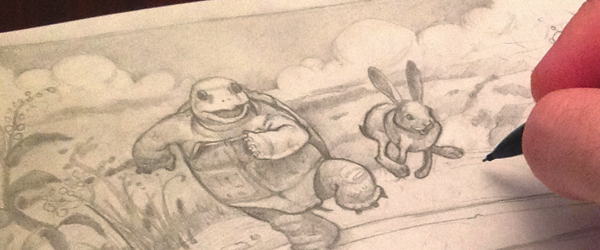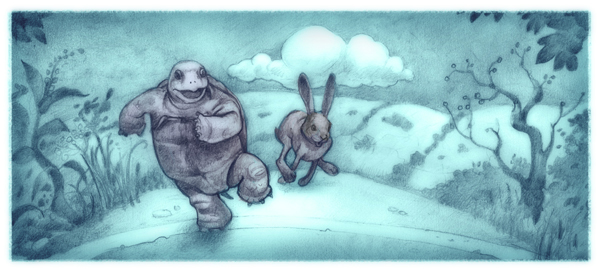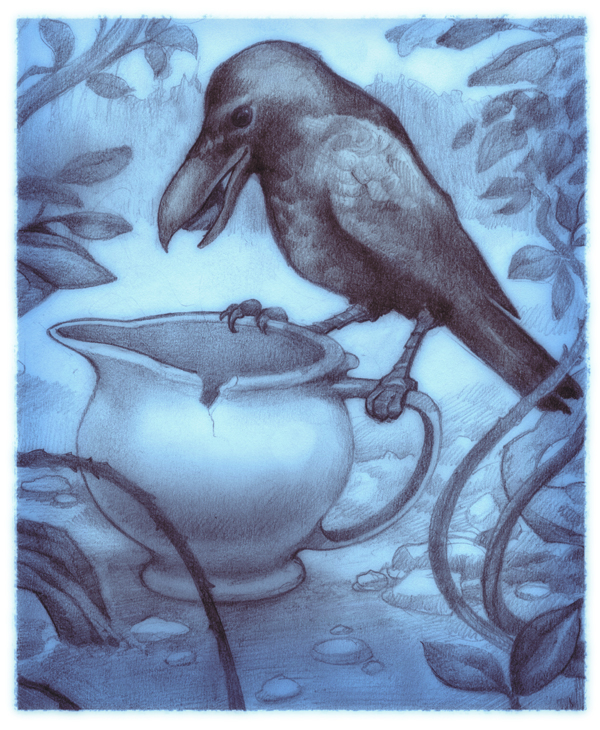Stained glass windows do not make us treasure glass as much as they make us treasure light. The glory of stained glass windows, like the glory of creation, consists in showcasing that which shines through it.
There are those who spend a great deal of time persuading others that the world around us is opaque –that there is nothing behind the world that we can treasure. We call these people wrong. We also call them scientific materialists. Aesop the fabulist was not a scientific materialist. If he had been, his fables would probably have gone something like: Once lions ate zebras and died later. Moral: n/a
Aesop’s fables do not merely look at crows, lions, donkeys, and ants, but also look through crows, and lions, donkeys, and ants. The end of every story shares the Christian view, that the world is most vibrant when it’s illuminated by meaning. The universe is like a window, not a wall. The heavens do not declare the glory of heavens. They declare the glory of God. Our communicating God spoke the world into existence, and we sometimes detect the vibrations of His voice in ants, and badgers, and grasshoppers, and lizards (Prov. 30: 24-28). Aesop, whoever he was, knew that meaning can shine through the humblest of animals. His fables compel us to view the world as something semi-transparent –something back-lit by truth.
If you want your child to begin to view the world in this way, Aesop’s Fables are a useful tool.
Here are three familiar fables that I like. The text comes from Rev. George Fyler Townsend’s 1867 translation.
A HARE one day ridiculed the short feet and slow pace of the Tortoise, who replied, laughing: “Though you be swift as the wind, I will beat you in a race.” The Hare, believing the assertion to be simply impossible, assented to the proposal; and they agreed that the Fox should choose the course and fix the goal. On the day appointed for the race the two started together. The Tortoise never for a moment stopped, but went on with a slow but steady pace straight to the end of the course. The Hare, lying down by the wayside, fell fast asleep. At last waking up, and moving as fast as he could, he saw the Tortoise had reached the goal, and was comfortably dozing after his fatigue.
Slow but steady wins the race.
A CROW perishing with thirst saw a pitcher, and hoping to find water, flew to it with delight. When he reached it, he discovered to his grief that it contained so little water that he could not possibly get at it. He tried everything he could think of to reach the water, but all his efforts were in vain. At last he collected as many stones as he could carry and dropped them one by one with his beak into the pitcher, until he brought the water within his reach and thus saved his life.
Necessity is the mother of invention.
 THE NORTH WIND and the Sun disputed as to which was the most powerful, and agreed that he should be declared the victor who could first strip a wayfaring man of his clothes. The North Wind first tried his power and blew with all his might, but the keener his blasts, the closer the Traveler wrapped his cloak around him, until at last, resigning all hope of victory, the Wind called upon the Sun to see what he could do. The Sun suddenly shone out with all his warmth. The Traveler no sooner felt his genial rays than he took off one garment after another, and at last, fairly overcome with heat, undressed and bathed in a stream that lay in his path.
THE NORTH WIND and the Sun disputed as to which was the most powerful, and agreed that he should be declared the victor who could first strip a wayfaring man of his clothes. The North Wind first tried his power and blew with all his might, but the keener his blasts, the closer the Traveler wrapped his cloak around him, until at last, resigning all hope of victory, the Wind called upon the Sun to see what he could do. The Sun suddenly shone out with all his warmth. The Traveler no sooner felt his genial rays than he took off one garment after another, and at last, fairly overcome with heat, undressed and bathed in a stream that lay in his path.
Persuasion is better than Force.
- Be More Human - February 17, 2020
- Time for Timelessness - August 19, 2019
- Seven Steps To a Better Bedtime Story - November 7, 2018



This is outstanding and a helpful corrective to the popular idea that (because so much utilitarian art is reduced to a crass tract) art must be disconnected from meaning in order to have validity. Mystery is wonderful, as is modesty, but part of the magic of life is unlocking meaning. Thanks, Zach.
“You cannot learn to love art, unless you first love what art mirrors.” -John Ruskin
Lovely post Zach. And great drawings of course! Thanks for helping us to “look along the sunbeam” to the real Source of Truth & Beauty.
Oh this is lovely! I so appreciate this. We have been reading Aesop’s fables again and again over the last couple of years, and this is a solid defense of their validity and importance and a brilliant reason to keep reading them. And these drawings?–amazing!
Thanks guys!
I just found this post yesterday and am delighted as we just began reading the fables last week! We’ll be reading these aloud this morning. Thank you!